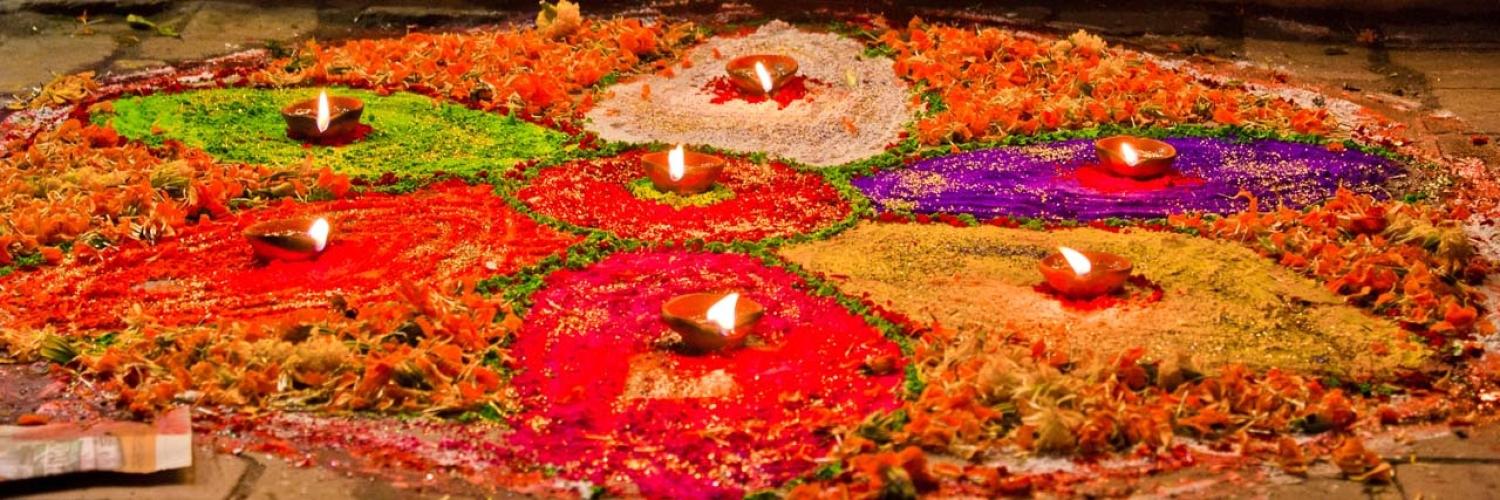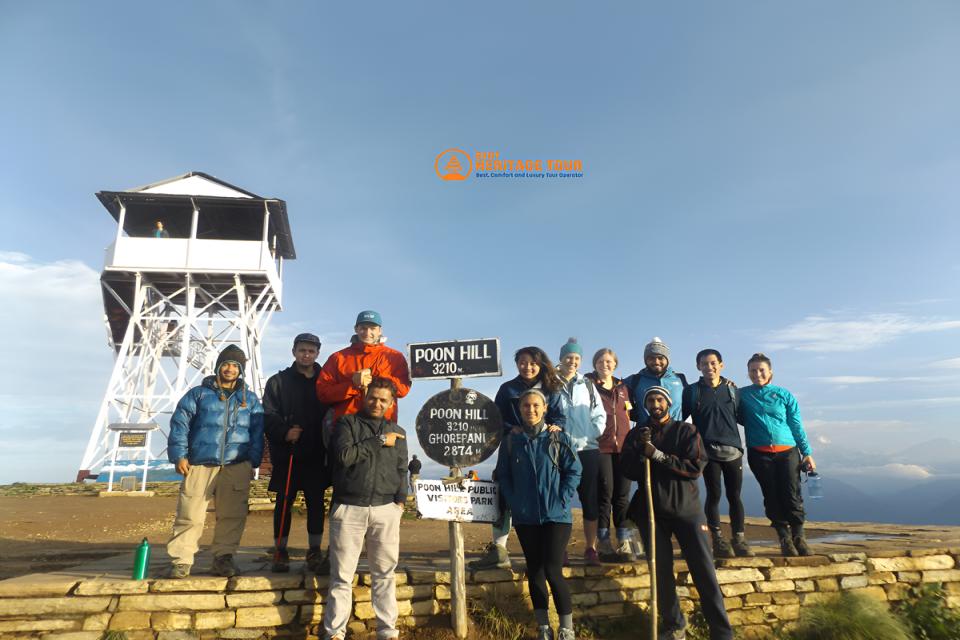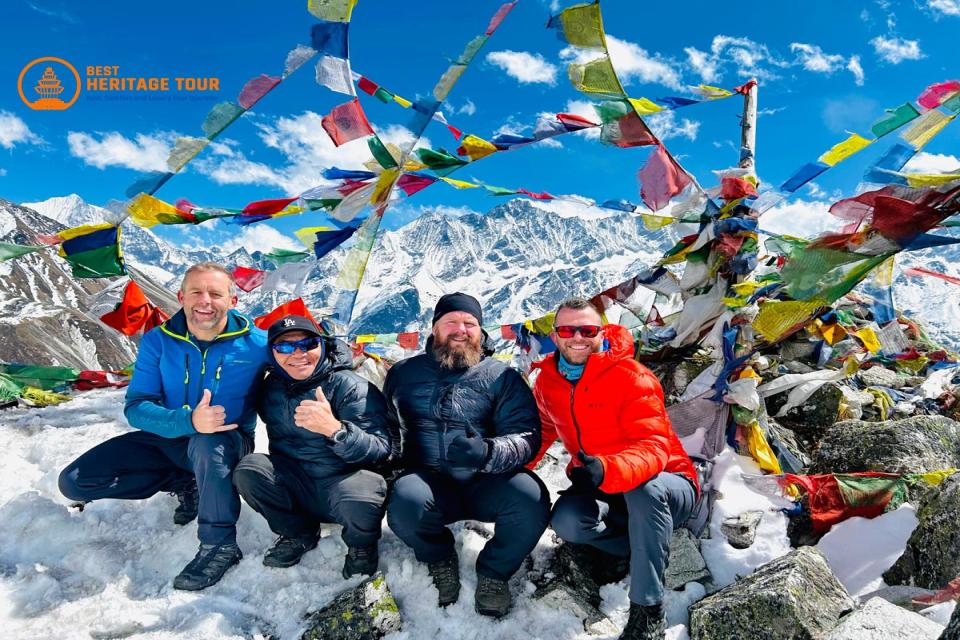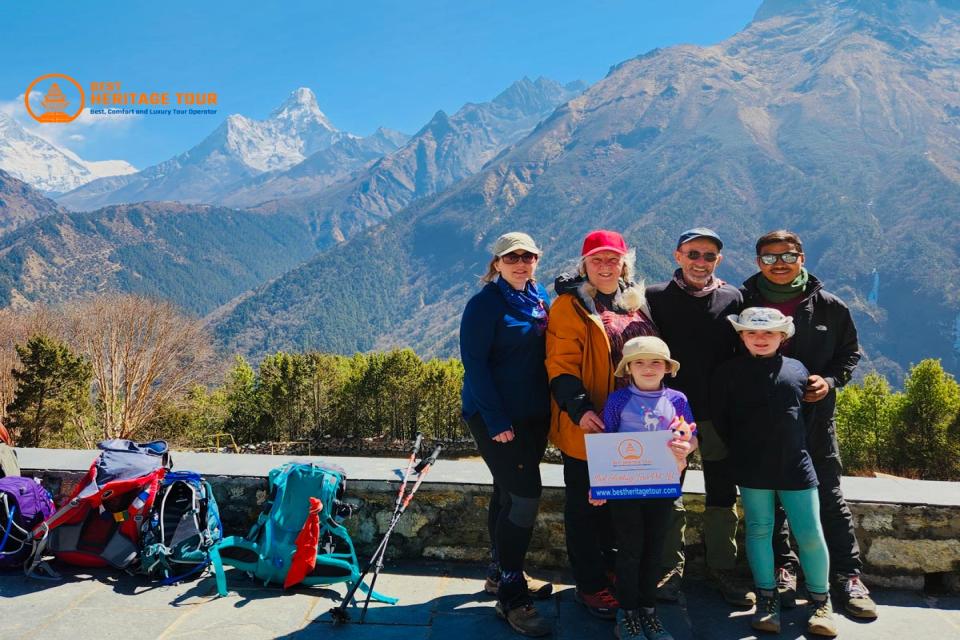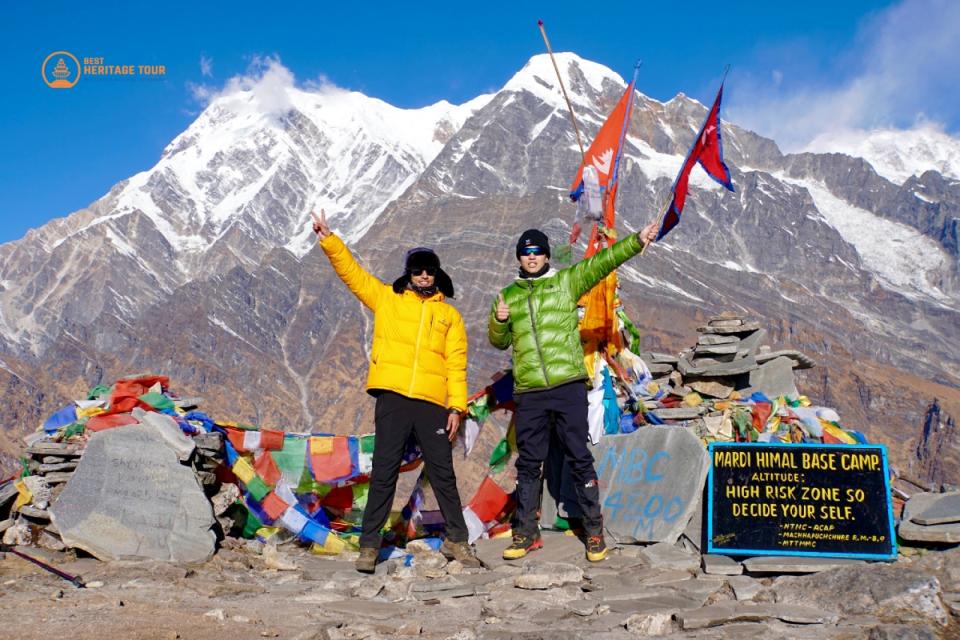Nepal, known for its Himalayan landscapes and spiritual traditions, reaches its cultural peak during Dashain and Tihar - the two most widely celebrated and spiritually significant festivals in the country. These back-to-back festivals are more than religious events, they are periods of transformation, devotion, and renewal. For travelers, experiencing Dashain and Tihar in Nepal offers a chance to go beyond sightseeing and truly connect with the rhythm of life in the Himalayas.
DASHAIN: Nepal’s Grandest Festival of Victory and Devotion
Dashain, also known as Bada Dashain, is the longest and most important festival in Nepal, celebrated over 15 days, typically in late September to mid-October. It commemorates the victory of Goddess Durga over the demon Mahishasura, symbolizing the triumph of good over evil and the feminine divine power over darkness and ignorance.
The Divine Figure: Goddess Durga
Durga is the ten-armed goddess riding a lion, revered for her strength, fearlessness, and motherly protection. During Dashain, she is worshipped in various forms - Shailaputri, Brahmacharini, Kalaratri, Mahagauri, and others - each representing a stage in spiritual transformation.
Day-by-Day Rituals and Their Significance
1. Ghatasthapana (Day 1)
-
The festival begins with Ghatasthapana, when a kalash (sacred vessel) is planted with jamara seeds (barley).
-
This kalash symbolizes Goddess Durga’s presence in the household.
-
A priest or elder performs rituals to invoke the goddess’s blessings for prosperity, growth, and victory.
2. Navaratri (Days 2-8)
-
Over the next nine nights, the goddess is worshipped in different forms representing power, wisdom, wealth, and transformation.
-
Homes and temples perform daily pujas with incense, lamps, mantras, and flower offerings.
-
In some regions, masked dances and traditional devotional songs known as Bhajans are held nightly.
3. Phulpati (Day 7)
-
A special royal tradition where offerings from Gorkha, the ancestral home of the Shah kings, are brought to Hanuman Dhoka in Kathmandu.
-
The military parade and ceremonial escort draw large crowds.
-
Families prepare their homes with fresh flowers and clean spaces to welcome the divine.
4. Maha Ashtami (Day 8)
-
The most intense day of powerful tantric worship.
-
Animal sacrifices - goats, buffaloes, and chickens are offered to Durga and Kali, especially in temples like Dakshinkali, to represent the slaying of inner demons.
-
Spiritual seekers use the occasion for meditation and introspection.
5. Maha Navami (Day 9)
-
On this day, tools, vehicles, weapons, and machinery are worshipped in Vishwakarma Puja, honoring the god of architecture and technology.
-
This is believed to bring success in work, trade, and learning.
6. Vijaya Dashami (Day 10)
-
The day of blessings and tika. Elders put a red tika (vermilion, yogurt, rice) and jamara on the foreheads of younger family members.
-
It’s a symbolic transmission of strength, blessings, and wisdom.
-
Families travel far and wide to gather with loved ones.
7. Kojagrat Purnima (Day 15)
-
The final day of Dashain, when Goddess Laxmi is worshipped during the full moon night.
-
People stay awake (“kojagrat” means “who is awake”) to welcome prosperity into their homes.
In 2025, Dashain will begin on September 22 and conclude on October 6, marking a period of powerful spiritual devotion, family reunions, and cultural rituals across the country.
Festival Atmosphere During Dashain
-
Streets are less busy, but homes are vibrant with rituals.
-
Markets are packed with shoppers buying new clothes, gifts, puja items, and animal offerings.
-
Traditional swings (ping) are built in villages - children and adults alike enjoy them.
-
Temples are alive with morning prayers and evening lamps.
TIHAR: The Festival of Lights, Animals, and Family Bonds
After Dashain, Tihar, also called Yamapanchak or Deepawali brings another wave of celebration, focusing on light, life, animals, and kinship. Celebrated over five days, usually in late October or early November, Tihar honors both divine beings and earthly creatures, making it one of the most heartwarming and photogenic festivals in Nepal.
Main Deity: Goddess Laxmi
The key figure of Tihar is Goddess Laxmi, the goddess of wealth, fortune, and purity. Her presence is symbolized by light, beauty, and cleanliness. Tihar is also associated with Yama, the god of death, whose arrival is softened through rituals that honor life and family.
Five Days of Tihar and What They Mean
1. Kag Tihar - Crow Day
-
Crows are fed rice and sweets placed on rooftops or streets.
-
Crows are believed to be messengers of Yama, and honoring them protects families from grief and premature death.
2. Kukur Tihar - Dog Day
-
Dogs are decorated with marigold garlands, tika, and special treats.
-
Dogs are revered for their loyalty and role as guardians - including in Hindu mythology where they guard the gates to the afterlife.
-
Foreign travelers often delight in seeing this beautiful act of compassion towards street and pet dogs.
3. Gai Tihar & Laxmi Puja - Cow Day & Goddess of Wealth
-
In the morning, cows, symbolic of abundance and motherhood, are offered food, tika, and flower garlands.
-
In the evening, homes light up with oil lamps, candles, LEDs, and intricate rangoli (colored powder designs) to welcome Laxmi.
-
People clean and decorate their homes to attract divine blessings.
-
At night children as well as adult plays the Bhailo.
4. Govardhan Puja & Mha Puja
-
Devotees create mud effigies of Govardhan Hill, offering food and flowers in honor of Lord Krishna, who lifted the hill to protect villagers from wrathful rain.
-
The Newar community performs Mha Puja, a ritual of self-purification, celebrating the body and soul.
-
At night children as well as adult plays the Deusi.
5. Bhai Tika - Celebrating Sibling Bonds
-
Sisters perform rituals to protect and bless their brothers, applying a multicolored tika (saptarangi tika) and placing a garland of makhamali (globe amaranth) around their necks.
-
Brothers in turn give gifts and promise to protect their sisters.
-
It is one of the most emotional and unifying days of the year.
In 2025, Tihar will be celebrated from October 19 to October 23.
Tihar in Full Glory
-
Houses glow with rows of lamps and lights, symbolizing the triumph of light over darkness.
-
Streets are filled with Deusi-Bhailo songs - a tradition of group singing and dancing by children and youth who go door to door collecting treats and donations.
-
Markets boom with sales of sweets, candles, cosmetics, and colorful powders.
-
The air smells of incense, flowers, and festive treats.
Why Visit Nepal during Dashain and Tihar?
-
Deep Cultural Immersion - Participate in real rituals, not tourist shows.
-
Spiritual Richness - Learn about Hindu gods like Durga, Laxmi, Yama, and Krishna through direct observation.
-
Photographic Wonder - Capture the stunning contrast of red tika, golden jamara, and glowing lamps.
-
Festive Food - Indulge in sel roti, anarsa, maasu, bara, yomari, and other rare delicacies.
-
Warm Welcomes - The festival season brings out the best in Nepali hospitality - travelers are often invited to join family gatherings.
Combine Culture with Adventure
For trekkers, the festival season is an ideal time to combine trekking with cultural celebrations:
-
Everest View Trek: Short and scenic, with stops in Sherpa villages.
-
Ghorepani Poon Hill Trek: Beautiful sunrise views with village homestays.
-
Mardi Himal Trek: Less crowded with rich cultural encounters.
-
Langtang Valley Trek: Perfect for peaceful village rituals and stunning views.
Final Reflections
Dashain and Tihar offer a unique window into the soul of Nepal. These are not just religious events, they are expressions of faith, family, identity, and hope. The chanting of mantras, the warmth of tika blessings, the dance of Deusi-Bhailo under the moonlight - it all comes together in a tapestry of meaning, joy, and human connection.
Whether you're walking through the incense-filled courtyards of Bhaktapur, sharing sel roti with a mountain family, or photographing the golden lights of Tihar from a rooftop in Patan, you'll find that Dashain and Tihar celebrations in Nepal will leave a mark on your spirit.
Plan Your Festival Tour with Best Heritage Tour
Want to explore Dashain and Tihar with authenticity and insight?
Website: Best Heritage Tour
Email: info@bestheritagetour.com
Phone/ Whatsapp/ Viber: +977- 9851149197
Get access to:
-
Guided heritage walks and temple rituals
-
Homestays with local families during festival time
-
Photography tours focused on light, colors, and culture
-
Festival-trek combos for unforgettable dual experiences
Start planning today. Let Nepal's festivals guide your next great journey.
Book your tour with Best Heritage Tour
Author: Best Heritage Tour
Date: 17th June, 2025

